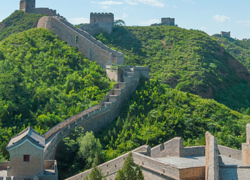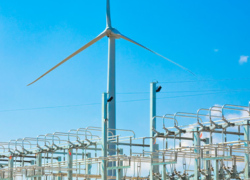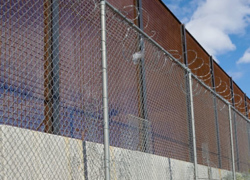The Future of India-Latin America Relations
Originally published on July 24, 2012 in the Dialogue’s daily Latin America Advisor
Q: India plans to host the first India-CELAC Foreign Ministers’ Dialogue on Aug. 7 in New Delhi, the Press Trust of India reported. While India’s economic engagement with the region has been far overshadowed by China’s, bilateral trade has grown from $2 billion in 2000 to more than $25 billion, with state-controlled Indian oil companies recently announcing almost $3 billion in investments in Venezuela’s oil sector. Where are political and economic relations between India and Latin America headed? What constraints are there to improving trade and how can they be remedied? Which countries and sectors present the best opportunities for growth?
A: Jorge Heine, CIGI chair in Global Governance at the Balsillie School of International Affairs in Waterloo, Ontario, and a former Chilean cabinet minister and ambassador to India: “The last decade has seen a sea change in Indo-Latin American relations. The number of LAC embassies in New Delhi grew from 12 in 2003 to 18 in 2008, and the Indian ones in the region from seven to 14. While only 10 presidential visits from Latin America to India took place from 1947 to 2000, a dozen did so since 2000. Trade is one-tenth of that with China, but it may nearly triple, to $70 billion, in 2015, part of increased South-South trade and investment flows. Yet, many Latin American government officials and businesses remain fixated on China. They do not realize that, according to some projections, India’s growth rate will overcome that of China by 2020 and India’s population will be bigger than China’s by 2030. The India-CELAC Dialogue could not be more timely. It joins Latin America’s new regionalism with the new India. The larger countries are taking the lead, with Brazil, Venezuela, Mexico, Chile and Argentina at the forefront in trade. Petroleum, soy oil and copper are the main exports to India, while manufactured products and intermediate goods like chemicals, equipment and machinery, pharmaceuticals and automobiles are imported from India. Latin American producers need to add more value to the commodities they export to India. They also need to familiarize themselves with the specificities of the Indian market and the consumer preferences of its 300 million-strong middle class. The region is well-placed to respond to India’s growing demand for food products. It could also tap into the growing Indian tourism market.”
A: Margaret Myers, director of the China and Latin America program at the Inter-American Dialogue: “For both India and China, Latin America remains an attractive export market and a source of much-needed raw materials and agricultural goods. Even as GDP growth slows among Asia’s emerging economies, domestic demand for Latin American agricultural and construction-related commodities will promote engagement with the region’s major commodities exporters. While China and India are increasingly active in Latin America, their approaches to engaging the region have differed considerably over the past decade. India lags its neighbor in terms of trade, but also has been slower to engage the region culturally and politically. Cultural, political, military and scientific engagement and cooperation are prominent features of China’s Latin America policy. Though lighter on cultural diplomacy, India’s mix of raw materials and intermediate goods exports to the region is much less threatening to Latin American industrial sectors than Chinese manufactured exports. India also has invested heavily in the region’s manufacturing and services sectors, whereas Chinese investment remains heavily focused on natural resources. India’s smaller economic footprint and its calculated approach to investment have meant less resistance from host governments, interest groups and manufacturers in the region. India now appears committed to expanding its political and institutional ties in Latin America. The India-CELAC Foreign Ministers’ Dialogue is a step in this direction, as is Inter-American Development Bank membership. India expressed an interest in becoming a donor-member this year. Whether through Bollywood screenings or high-level collaboration with regional institutions, Latin America is likely to see more in the way of political and cultural engagement from India in coming years. From an economic perspective, India will continue to pursue its smaller-scale (in comparison to China) and relatively risk adverse approach to trade and investment with the region.”
A: Jahangir Aziz, senior Asia economist and India chief economist at JP Morgan: “India and Latin America have surprisingly strong similarities in terms of their economic and political history in the post-world war period. They went through strong socialistic regimes before economic crises forced them to liberalize. While the vast geographical separation has been a barrier to closer economic and political ties, this is changing rapidly. One would expect these ties to strengthen quite significantly in the coming years. Clearly the geographical distance is a major factor. However, economic necessity can overcome such barriers as we have seen in the rise in trade between China and Latin America. As the uncertainty over the recovery of developed market economies keeps rising, emerging market economies as a group have increasingly started to rely on each other. We have seen this in the dramatic rise in intra-emerging market trade in the last five years. This is likely to keep expanding. Seen in this light, it is likely that India-Latin America trade will soon emerge as an important growth driver. When this realization sinks in more firmly, free-trade and other agreements will follow and should help to expand the pace of trade integration even more. Once this happens, my guess is that greater financial integration will also occur. One would surmise that the larger economies of Latin America, such as Brazil, Argentina and Chile, will be the natural trading partners of India, especially in commodities, agricultural products and technology, software engineering, pharmaceuticals and aviation equipment.”



















